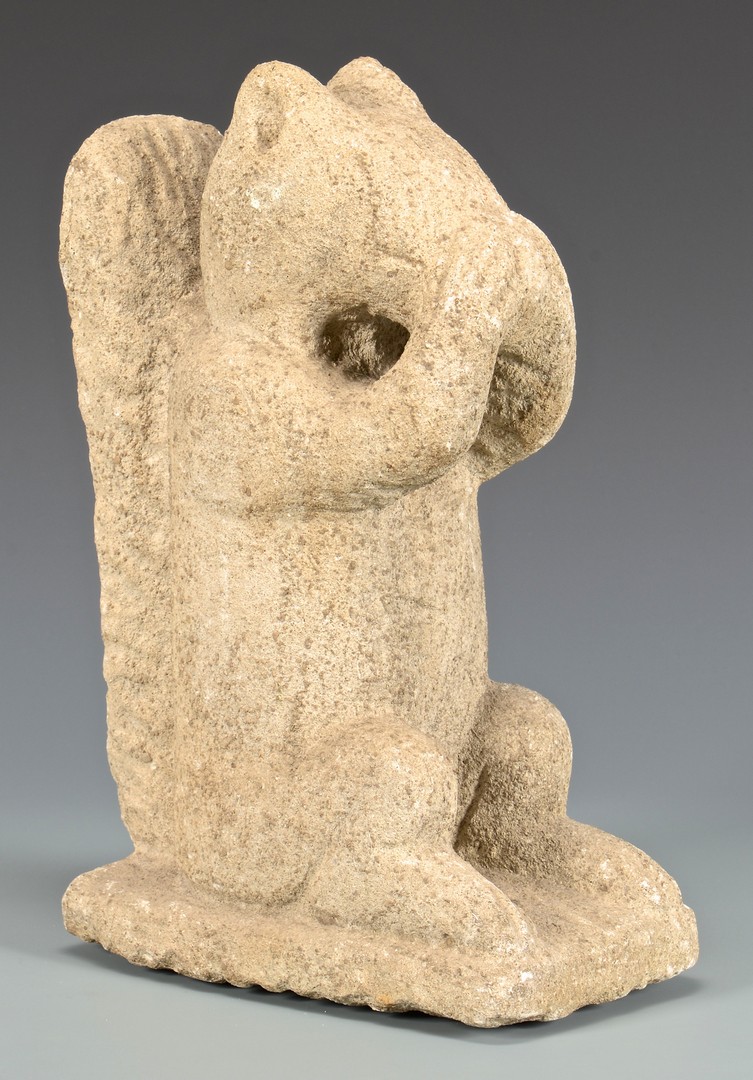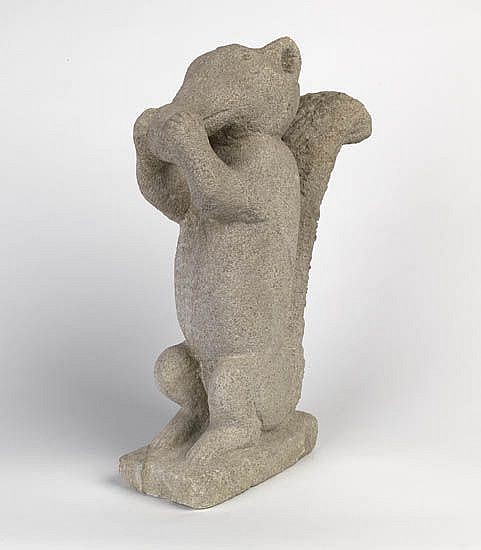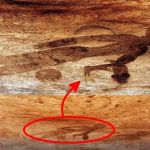William Edmondson’s Squirrel at Limestone, the Philadelphia Museum of Art.

The sculpture titled “Squirrel” by William Edmondson, an American artist who lived from 1874 to 1951, stands as a testament to his remarkable talent and unique artistic vision. Crafted from limestone, this piece is part of the esteemed collection at the Philadelphia Museum of Art. Edmondson, a self-taught sculptor, is celebrated for his ability to transform ordinary limestone into extraordinary works of art, imbued with both simplicity and profound expressiveness.
William Edmondson was born in Nashville, Tennessee, to parents who were formerly enslaved. His artistic journey began later in life, after he had worked various jobs including as a janitor and a hospital orderly. It was not until the 1930s, during the Great Depression, that Edmondson started carving limestone, initially inspired by a divine vision that encouraged him to create tombstones for the African American community. His early works were functional, but he soon expanded his repertoire to include a wide array of subjects, from biblical figures and animals to everyday people and abstract forms.

“Squirrel” exemplifies Edmondson’s skill in capturing the essence of his subjects with minimalistic yet powerful forms. The sculpture portrays a squirrel in a poised and attentive stance, its features simplified yet instantly recognizable. Edmondson’s choice of limestone, a common and unassuming material, contrasts with the artistic value he imbues in his works, reflecting his philosophy that beauty and significance can be found in the humble and the ordinary.
The tactile quality of the limestone is a notable feature of “Squirrel.” Edmondson’s hands-on approach to sculpting involved working directly with the stone, using simple tools such as chisels and hammers. This method allowed him to create textures and forms that resonate with an organic, almost primordial, quality. The surface of the squirrel sculpture, with its subtle marks and contours, invites viewers to contemplate the physicality and presence of the animal, bridging a connection between the natural world and the artistic realm.
Edmondson’s work is deeply rooted in his cultural and spiritual background. As an African American artist in the segregated South, his creations often reflected themes of resilience, spirituality, and community. While “Squirrel” might appear as a straightforward depiction of a small animal, it also carries layers of meaning related to Edmondson’s worldview. Squirrels, known for their industrious nature and adaptability, could be seen as symbols of resourcefulness and perseverance, qualities that were essential to Edmondson’s own life and the lives of those around him.

The inclusion of “Squirrel” in the Philadelphia Museum of Art’s collection signifies a recognition of Edmondson’s contributions to American art. His work, which gained significant attention during his lifetime, especially after being discovered by prominent art collectors and critics, continues to be celebrated for its originality and emotive power. The museum’s collection of Edmondson’s sculptures helps to preserve and share his legacy, ensuring that future generations can appreciate the unique perspectives and artistic achievements he brought to the world.
In conclusion, “Squirrel” by William Edmondson is more than a simple sculpture of an animal. It is a reflection of the artist’s remarkable journey, his deep connection to his materials, and his ability to convey profound themes through modest means. Crafted from limestone and housed in the Philadelphia Museum of Art, this piece stands as a lasting tribute to Edmondson’s vision and his enduring impact on the art world. Through “Squirrel” and his other works, Edmondson continues to inspire and resonate with audiences, affirming the power of art to transcend time and speak to the human experience.










